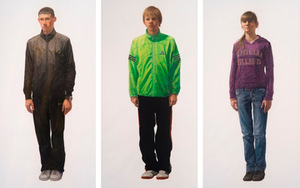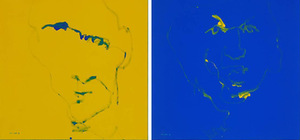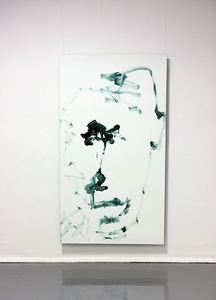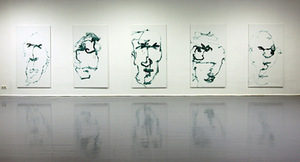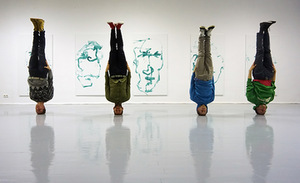The search for authentic portrait in the works of Gataveckai 4
In brief: The exhibition of brothers Algirdas and Remigijus Gataveckai "Self-portraits - homonyms", which was opened at the Kaunas POST gallery has recently ended. The exhibition presented the most recent artists' works, indicating a new phase in their oeuvre. Although, the exhibition is over, I hope this text will still appear to be relevant, at least for those who are less familiar with the artists' works, because I will not only review the exhibition but Gataveckai oeuvre more generally.
Those who often reproach that contemporary art, supposedly, does not pay enough attention to social issues should be the first to get acquainted with the works of Gataveckai. Unfortunately, but it often so happens that this segment of the public, as chance would have it, misses the opportunities to visit the socially engaged art exhibitions - and there are plenty - and therefore rushes to condemn the entire contemporary art as too formalistic and conceptually centered on self.
The example of Gataveckai is the best in denying such claims. For several years artists have been creating portraits of children living in the foster homes and participating in the various events related to such institutions.
Gataveckai are known as representatives of realistic, almost academic painting and the place of such style in the current art field is quite complicated. A few choose this way of expression in order not to appear too retrograde.
Although Gataveckai have created more than a few self-portraits, still, they were mostly choosing to paint people around them. And in their most recent exhibition at the POST gallery artists presented exclusively self-portraits. Faces captured on the large format canvases reminded of sketches painted with one thrusting line.
However, the exhibited works will reveal little if we only appeal to what meets the eye. What helped decipher them was the documentation of artists' creative process provided in the next room. It revealed that the process is just as important as and perhaps even more important than the final result. The works were created by both Gataveckai moving in space. One of them was holding the canvas and the other was intuitively and spontaneously applying paint.
I believe that after this exhibition we can talk about one, particularly highlighted feature/goal of Gataveckai oeuvre - a search for maximum authenticity in a portrait genre.
